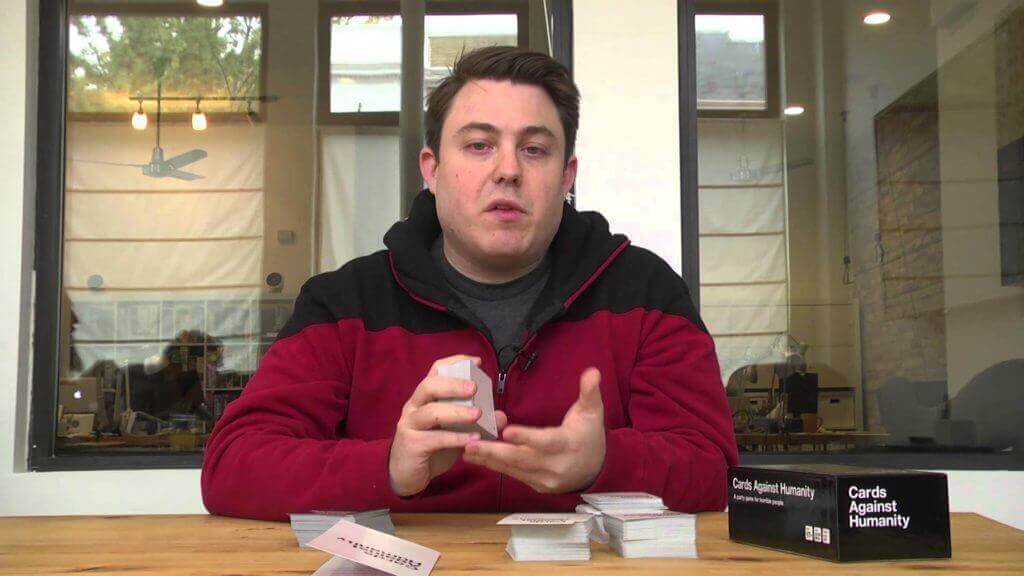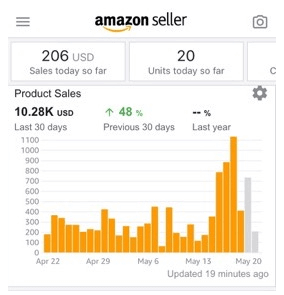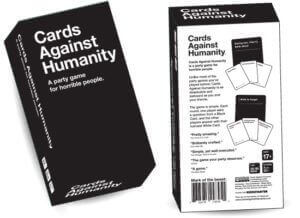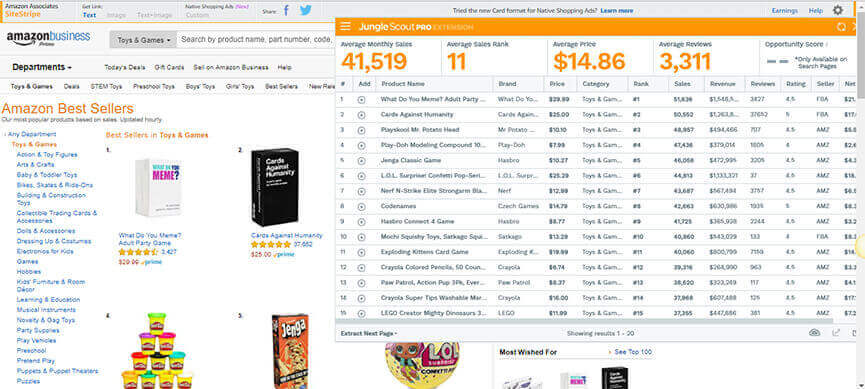In this post I would like to talk about 3 very talented individuals who have enjoyed great success on Amazon. Through their stories you will be able to learn:
- What their call to action was
- How they found their niche
- What strategies and tactics they used in order to succeed
Amazon success story # 1: Marvin
What drove Marvin to start selling on Amazon ?
Marvin, whose story originally appears in “The Selling Family” blog, was an average guy, working a 9-5 job and was constantly on the lookout for new opportunities to make some passive income. He was looking to make anywhere from $500- $1,000 per month but his success surpassed his wildest dreams. At first, he had some hard times sourcing items and went store to store with the Amazon app but could not find anything to sell. But Marvin, a man who had a strong drive to succeed and exactly $500 to invest was able to grow his eCommerce business to $10 k per month:
But what was the secret to Marvin’s Success?
As a society we love learning about success stories so that we can emulate and learn from them. The trick to his success was in his business strategy, he focused on items that:
- Ranked low
- Had a minimum profit of $2.00
- Had a return on investment of 20%
- Sold within 30 days
The essence of this approach is to create a quick and steady revenue stream using items with a low profit margin but high volume. These lower priced items are also easier to find in general and especially in larger quantities which makes this model more sustainable.
#1: Find a niche
Marvin understood that he needed to find a niche and decided to delve into the ‘Grocery’ category which required pre approval from Amazon. The reason for this is he believed that he was an expert grocery shopper and could find the bargains he needed for his online business. Try and look at your personal experience and think:
- What items am I good at finding deals for ?
- Which item categories have I too easily dismissed ?
- What intimate products would people prefer to buy online at a premium instead of going to a store ?
- If I can find great deals on shoes and games for my kids – why can’t this translate into my niche ?
(At this point I would highly recommend reading how we found a niche that helped us skyrocket sales on eBay)
#2: Make connections and build relationships
When sourcing items at a store, many people are scared to tell employees, let alone the manager that they are selling their products on Amazon. This fear is pretty valid when it comes to large chains such as:
- Target
- Macy’s
- Walmart
But when it comes to local, owner run stores you are making a mistake. Marvin decided to introduce himself to managers as an online retailer and he reaped the rewards. Many times managers gave him wholesale prices or gave him a call when they were having clearance sales.
Some of Marvin’s top networking tips are:
- Honesty – Be honest, tell salespeople who are genuinely interested in why you buy such a large quantity and variety of weird items the truth. Say you run an online business, selling items to people who otherwise would not have the time or access to such products.
- Names – Keep a list of names either of employees or managers who were helpful and/or you had a connection with. Visiting tens of stores you may easily forget. Remembering a helpful employees name will make them feel good about themselves and make them more inclined to continue helping you.
- Employees – It’s always nice to befriend the manager but more often than not they will be less helpful as they are very busy. The people who can really help you are the employees who know exactly what is on sale and what is being restocked. Pay attention to the little people!
- Respect – Respect the stores that you go into and be sure to not make a mess and put things back in their place. This way stores will be happy to see you come and not just go.
#3: Build a strategy
Marvin’s success was built off of a simple strategy that you can replicate or use in order to develop your own. The strategy is really simple:
- Go to a store and look for a single item with a 20% profit margin.
- Call up other branches or even competing stores and ask them if they carry this item at a similar price
- If you can’t find the item then you saved yourself a trip
- But if you do find the item than buy as many as you can in the store you are currently in and drive to the other branches and pick up the rest of the merchandise.
Let’s assume you found a table top lamp for $20 and you are convinced you can sell it fo for a 20% profit and by calling up other branches you find a total of 30 pieces – you would have a generous income source here especially if you take Amazon fees into consideration when deciding on the price. If this item is on sale then it’s hard to replicate but still a good deal, on the other hand if this is a regularly stocked item sold at this price then you just found yourself a product which can offer you a regular source of income. All you have to do is find more items like this and you are in business.
‘It might seem impossible to start but once you succeed with your first few items, it will be a breeze’, says Marvin.
Amazon Success story # 2: James Fend

How did he get started ?
When Amazon first came out, James Fend brushed it off as another eBay and was sure that it was impossible to make more than a few hundred dollars a month. He was not interested in a a few extra bucks in his pocket but wanted to make hard cash. He then heard a podcast of someone who was making a million dollars a month on Amazon and this really peaked his interest. When Fend started he claims the market was already ‘saturated’ and his first tip to people who want to make it big on Amazon is: it is never too late in the game to gain a foothold!
James was not interested in going store to store and trying to resell those items online instead he was interested in buying items from foreign manufacturers and selling them under his own private label. He says that dominating a niche is as wide open as the seas and that you need to:
- Decide which’ products to sell
- Perform a basic viability check
- Launch it on Amazon
- Prove it sells
- Make sure the volumes matches your cash flow expectations.
The Amazon sensation says talking and doing research are important to a point. After that point it is action which is required, of the 30 plus products he tried launching at first, only 6 were successful. Trial and error is key here!
The Process
At first James started selling the products he found around his house:
- Body measuring tapes
- Jogger pants
- Dog collars
He went onto Aliexpress and ordered a few of each item and when they arrived he put his own labels on the products. He just barely broke even but this little experiment of his helped him gain both proof and traction for his ideas. The things he learned and thought about from this pilot included:
- What sold and at what price?
- Were there complaints? What could I fix ?
- What could I do to optimize the listings and improve reviews ?
He then returned to Alibaba and bought 100-300 units of his best selling products.
The major things he decided to improve were:
- Getting more reviews – The main tactic James used to get more reviews was letting his friends and family know that he was selling on Amazon, hoping that they would buy and leave a positive review. Additionally he would post his items on forums that focused on the niche he was involved in such as jogging for example. Here he would actually give some products away for free. This was all in an attempt to get over 50 positive reviews.
- Optimizing his listings – In this category he decided to optimize 3 key aspects:
- Better pictures
- Better Keywords
- Better Copy
Going over tens of reviews that he got but more importantly going over his competition’s reviews, he garnered information that was missing and added this information to his:- Product titles
- Product description in bullet points
- Product picturesThe example Fend gives is of a basketball that was selling for $50 but did not mention if it was a junior size or a standard size. He saw a customer review saying that he took the risk and it happened to be the regular size. If you were competing with this listing you could add the size in the title, in images and in the copy and this would help you overcome the competition as there would be no doubt regarding the biggest question lingering.
- Improve the packaging and labeling – As far as graphics, James gave his brand a complete face lift, designing a professional logo as well as packaging and labels. This is important as far as how much trust a customer is willing to put in your brand (to learn more about the significance of trust I highly recommend reading the post about 9 trust signals you should use).
At this point, James’s products were ranking 8th and 9th on the first search results page on Amazon and he was enjoying conversion rates of 15% – 20%! But now 20% of his products were responsible for 80% of his revenue, so he cut the less profitable products loose and focused on the more profitable ones while simultaneously searching for his next golden eggs.
This process of constantly optimizing products based on data and the feedback loop as well as the ability to be versatile and constantly strive for improvement are the key factors lying behind James Fend’s success story.
Amazon Success story # 3: Max Tempkin

How the product got off the ground + Key takeaways
Cards Against Humanity is an Amazon success story that sellers can learn a lot from. Max Tempkin was an ordinary penniless college student who wanted to entertain and help 30/40 friends socialize at his parties. The card game was a huge success and they created a few more copies so friends could take the game back to their dorms – again it was a big success and people started wondering where they could purchase it.
Max and his gang did not have the $4,000 required to manufacture the game so they turned to Kickstarter. Here are some tactics they used both on Kickstarter and Amazon:
- In order to create buzz and engagement, Max offered a free downloadable version of the game where people also entered their email address. This tactic worked and the game managed to raise $15,570 or 378% above the amount they originally had asked for. They used the email list once the product came out a year later to reach out to interested parties.
- They sent copies of the game to key influencers which helped Cards Against Humanity gain clout and build a name on the internet and on social media. This was one of the key tactics for their success on Amazon. Think about the fact that by putting one free copy of your product in front of someone who has 30,000 followers on Instagram or 10,000 followers on Youtube you can drive a lot of traffic to your Amazon listing. Beyond that, you can use their comments and quotes on your Amazon listing and create peer based confidence in your product.
- During the manufacturing stage, Max wanted to print 2,000 units with 500 cards in each package – American manufactures wanted $20 a piece which would not be profitable for him. That is why he decided to turn to a Chinese manufacturer who was much more flexible on:
- The cost of production
- The number of units
- The design of the cards.
When you want to manufacture your own products consider using Chinese manufacturers which you can find, among other place on Alibaba which creates a competitive marketplace where manufacturers are willing to compromise in order to win your business.
- Using a simple black and white design which stands out in comparison with the competition since most games come in brightly colored boxes. This visual presentation is key when competing for eyeballs on Amazon. The key takeaway is knowing how your competitor’s products look visually on Amazon and selling a product which really stands out.
The Success Story
Needless to say, this game was a sensation on Amazon, selling at $25 a game, they sold out all of their inventory within 6 days of it arriving at the Amazon Fulfillment center (FBA) and were/are listed as the number one selling product in the game category. Cards Against Humanity sold so well that Amazon thought that it was a hoax! To this day, the card game is the top selling game on Amazon and is currently selling an average of 40,000 copies a month:
Summing It Up
There you have it, 3 people who were super successful with their eCommerce businesses on Amazon. What is great about these stories is that there are quite a few tips these mavericks have shared with us which are very much actionable. I suggest choosing and picking the tactics which you think would be right for you and your business model and trying to introduce them incrementally. Please comment below if you know of any other phenomenal Amazon success stories, especially if they have actionable insights.






